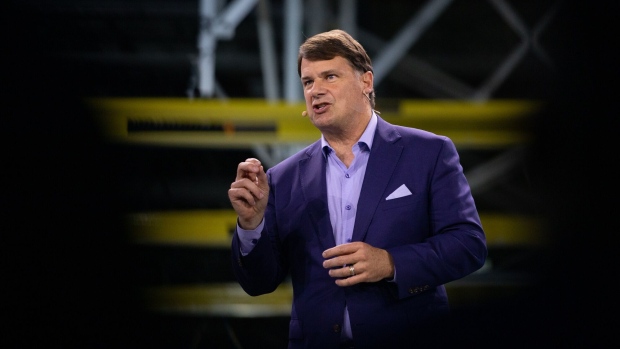May 19, 2023
Ford CEO Out to Prove Wall Street Wrong on ‘Crazy High’ EV Goal
, Bloomberg News

(Bloomberg) -- Ford Motor Co. surprised Wall Street earlier this month with a strong first quarter, but Chief Executive Officer Jim Farley still faced a tough crowd by sticking with a goal for the company’s money-losing electric vehicle unit to be churning out 2 million models annually in a few years.
“I appreciate that Jim,” Adam Jonas, an analyst for Morgan Stanley, said during Ford’s earnings call on May 2. But that goal is worrying because it’s a “crazy high number.”
Farley disagrees. He sees a path that includes slashing production costs on Ford’s current EVs and releasing a more-efficient second generation to help boost profit and annual production to 2 million by the end of 2026, which would be a 16-fold increase from last year. To drive home his point, he’s betting that he can win converts face-to-face by hosting analysts and investors at Ford’s headquarters in Dearborn, Michigan, from May 21-22 to lay out the company’s $50 billion plan.
Wall Street still needs a lot of convincing. Ford projects losses from its EV unit to be $3 billion this year. Meanwhile, Tesla continues to dominate the US market and has been cutting prices, forcing Ford and other competitors to follow. And while Ford has shown promise with its Mach-E electric SUV and F-150 Lightning plug-in pickup, the automaker continues to struggle with high costs and spotty quality.
Doubts about Ford’s EV ambitions have weighed on the company’s stock, which is little changed this year, compared to about a 9% gain for the S&P 500.
One big point of contention is the timeline on making EVs profitable. In the first quarter, the unit posted a loss of $722 million in earnings before interest and taxes (EBIT) on sales of $707 million, or 1.7% of the company’s total revenue. That equated to a negative margin rate of 102%. Ford has projected that will improve to 8% by the end of 2026. (The company’s non-EV units are at about a 10% EBIT margin rate.)
“That skepticism is a byproduct of what’s happened in the past few years of continued mediocre results,” David Whiston, an analyst with Morningstar, said in an interview. “People are saying: ‘It’s great you’re saying 8%, but until you do it, I just can’t believe you.’”
Read more: Ford Sees Electric-Vehicle Losses Growing
Farley has promised its first-generation EVs will be turning an operating profit by the end of next year, though he hasn’t specified the EBIT margin he’s targeting by then. If his plan comes together, electric cars will account for close to one-third of Ford’s global production.
“It’s pretty challenging,” Farley said on the May 2 earnings call. But “we will take you through why we believe that 8% margin is totally realistic despite all the pricing pressure that we will absolutely get.”
Farley doesn’t appear deterred by the skeptics. He’s even added more pressure by saying Ford can do better than that 8% margin target and eventually surpass Tesla as the top EV maker in the US.
“The reality is that Tesla hasn’t had a lot of competition until Ford,” Farley told Bloomberg Television in March.
©2023 Bloomberg L.P.


